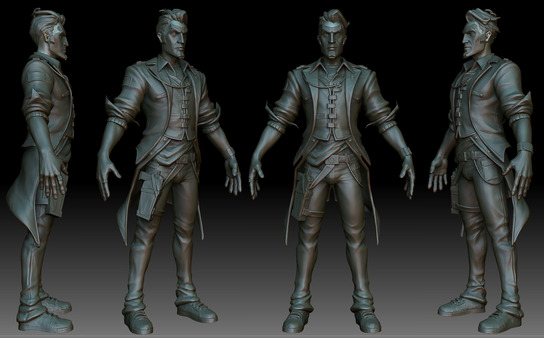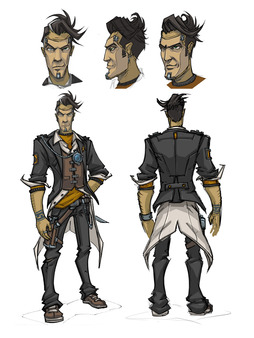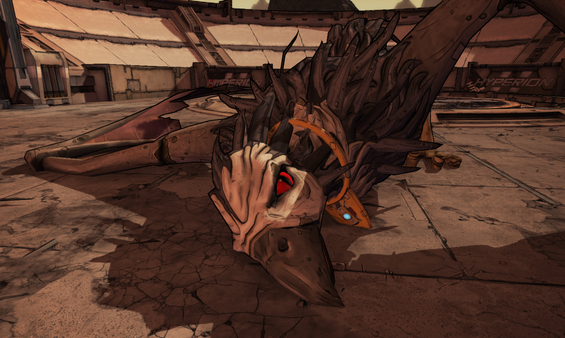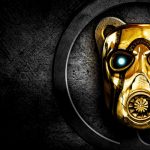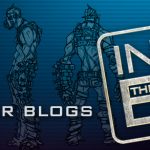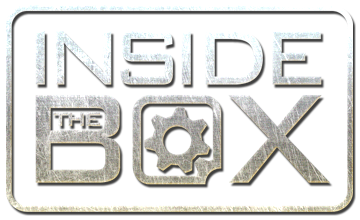
Inside the Box serves as a forum for individuals involved in the production of Gearbox Software content to share personal motives, methods, process and results. Gearbox Software projects are created by a diverse range of individuals spanning a spectrum of different backgrounds, interests, objectives and world views. The views and opinions expressed in this article are those of the author and do not necessarily reflect the official policy or position of Gearbox Software or any of its individual members outside of the author.
A couple of people have asked about Handsome Jack – how we came up with him, why he is the way he is, and other stuff like that – so for this week’s Inside the Box, I’m going to talk about Handsome Jack. I will also use all my self-restraint to not call this article Handsome Jack In The Box, as twitterfriends Eric (@Souzetsu) and Jim “Dungeonmans” Shepard (@madjackmcmad) suggested.
It is, of course, always difficult to talk about your own work without coming off as a self-congratulatory douche (for me, anyway), so apologies in advance.
From the getgo, creative director Paul Hellquist and I knew that Borderlands 2 needed to be a “villain story.” The first game’s story had a strong and clear goal (“Find the Vault,”) but no central, driving force to lead you to that goal beyond your own curiosity and greed.
Paul and I are huge fans of villain-centric game stories like Portal, System Shock, and BioShock (which Paul was lead designer of). Villain stories are great because the goal is simple (“kill this bad dude,”), intrinsically has personality, and gives us a really simple vehicle by which to remind the player of their ultimate goal.
For example, in Borderlands 1 – and I didn’t work on Borderlands 1, so this is just my perspective as a fan of the game – NPCs occasionally messaged you over radio to remind you that the Vault exists, and it’s important, and you’re supposed to find it. This worked in terms of making sure the player never lost sight of their goal (if anything, the backlash against BL1’s ending shows just how successful the buildup to finding the Vault truly was), but it, at times, felt a little tell-y rather than show-y; since The Vault was just an big door full of loot and alien stuff, it couldn’t directly communicate its own importance to you. Instead, other characters had to jump in and attempt to convince you of The Vault’s relevance.
Our hope with Handsome Jack is that he could represent your one-stop-shop for all narrative importance. He could be your endgoal (“kill Jack”), could remind you of his own narrative importance as that endgoal (“you’re a bandit and I’m the hero”), and hopefully entertain the player while doing the first two (“these pretzels suck”*).
We made Jack because we wanted to make a really focused, tight narrative about killing a single dude. This presented a pretty big challenge, however: if our entire story revolved around a single character – if this one villain was the narrative lynchpin keeping the entire plot together – then he’d damn well better be interesting.
Initially, we thought – or at least I thought – that moral ambiguity is interesting. I took it too far, though: I wanted Jack to be a constant frenemy, a fellow Vault Hunter who was racing you to some ultimate goal (what would eventually become The Warrior), but who would help and hinder you in equal measure. Kind of like Whisper from the first Fable game. After showing this idea to Mikey (Neumann, co-writer of Borderlands 1), he suggested that we just “pull the trigger” on Jack being an out-and-out bad guy for clarity’s sake. Now knowing that Jack should be a bad guy through-and-through, Paul and I needed to think about what made him interesting.
Since it’s Borderlands, Jack should probably be funny, we thought. But you should still hate him, because if you like him too much then you’ll stop believing in your ultimate goal of killing the crap out of him. Jack, like the story of Borderlands 2 as a whole, needed to toe the line between funny and serious – we wanted him to make you laugh, then do something that made you desperately wish to put a bullet between his eyes, then make you laugh again.
We initially used this Nathan Fillion interview as a template for thinking about Jack. Fillion acts charming and funny, but also slightly arrogant in a down-to-Earth kind of way (in my opinion, there are two kinds of arrogance: boring, Empreror Palpatine-type arrogance where you just sort of cackle a lot and never show enthusiasm at anything because it’s beneath you, and the more bombastic, wink-and-a-smile arrogance that pretends to be friendly and jocular. We chose the latter for Jack.).
Did we succeed with Jack? I dunno. Your mileage may vary. I do know that initially, however, I’d completely screwed Jack up.
In the first draft of the script, Jack was a nonstop jokepocalypse. All. The. Time. You started up the game? He’d crack a joke. You died? He’d crack a joke. You fight his girlfriend? He’d crack a joke. You murder his daughter? He’d crack a joke.
After we recorded the first draft of the script, I got feedback from Paul, Jeramy (Cooke, art director) and Mikey that Jack felt one-dimensional. He was kinda funny, sure, but he was basically the same one-note joke played over and over for forty hours: “I’m Jack, I’m arrogant, I’m going to kill you, you’re pathetic, I am ludicrously indifferent to the suffering of others.”
For forty hours.
It was tiresome and repetitive, to say the least. To fix this, we treated Angel’s death, and the leadup to it, as Jack’s breaking point. Before his daughter dies, everything is hilarious to Jack. After Angel dies, however, we tried to make a clear break – he stops making jokes, and starts getting angry for the first time in the entire game. It didn’t take much – one pass on Jack’s post-Angel lines by Mikey, then a final one by me – but by removing all of Jack’s goofier jabs at the player after Angel died, he hopefully ended up feeling a little more three-dimensional than the nonstop one-liner machine that he was in the first draft of the script.
That said, we still left the gag where Jack pretends to be Roland and suggests that you all go out for milkshakes, because screw it.
By removing some of Jack’s jocularity in the third act, we had attempted to give him an arc: he starts off thinking the player is irrelevant, then finds them amusing, then hates them with an unquenchable passion to the point where he will do anything to kill the player in single combat.
This is, incidentally, the exact same arc we wanted the player to experience in regards to Jack.
We wanted you to initially think of Jack as a funny, but ultimately harmless dick. That’s why the Butt Stallion monologue comes so early in the game – it’s too goofy to take seriously – but why it also lives in the same area as the ”Handsome Jack Here” sidequest, where Jack brutally murders Helena Pierce and then laughs about it. Jack’s a marginally dangerous dick because he kills Helena, but he’s hopefully kind of amusing because of his weird Butt Stallion/pretzels dialog.**
As time goes on, however, we tried to slowly ratchet up Jack’s dickishness. He tries to bombard Sanctuary. Then he tricks you into lowering the city’s shields, and reveals he’s been manipulating the Vault Hunters since the start of the first game (a pretty obvious retcon, but one that fans have been surprisingly forgiving of).
Then he kills Bloodwing.
We wanted this to be the first real moment that Jack becomes a serious threat. It’s all fun and games, we hoped, until Bloodwing loses a head. I had the realization fairly late in development that the one-word theme of Borderlands 2’s story is “hatred.” The player’s arc is hopefully one of growing to hate Jack, and Jack’s arc is one of him growing to hate the player. Now, I totally acknowledge that this is the creepiest and most negative sounding theme ever, and I’m not gonna throw out that little tidbit if I’m ever asked to defend videogames as an expressive medium, but there it is.
I can talk about Jack much much more than I already have, because talking about Jack is basically talking about Borderlands 2’s story as a whole. But I wanna know: what do you want to hear more about?
I could talk about how Jack’s hero complex was meant to paint the player as an ambiguous antihero, because antiheroes are more fun. I can talk about how we tried to work Jack into the BL1 Angel subplot. I can talk about working with Dameon. What do you wanna hear about? Let us know in the comments or via email.
*This was an adlib by Dameon Clarke, the voice of Handsome Jack. It’s easily Jack’s single most popular line, and I didn’t frigging write it. I will never forgive Dameon for this.
**Seriously, Dameon. I hate you.
If you have any feedback on this article or what you want to see here on Inside the Box please let us know at [email protected], hit up our forums or tweet me @reverendanthony


